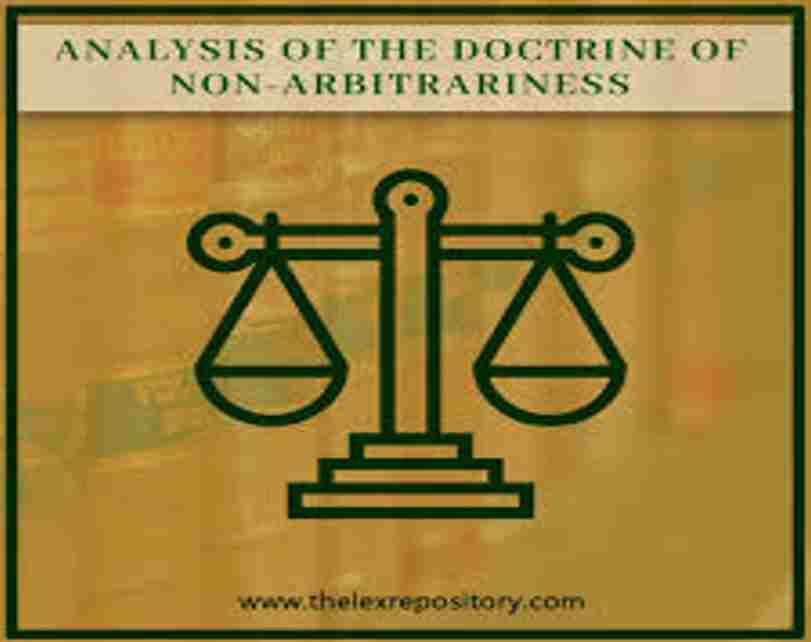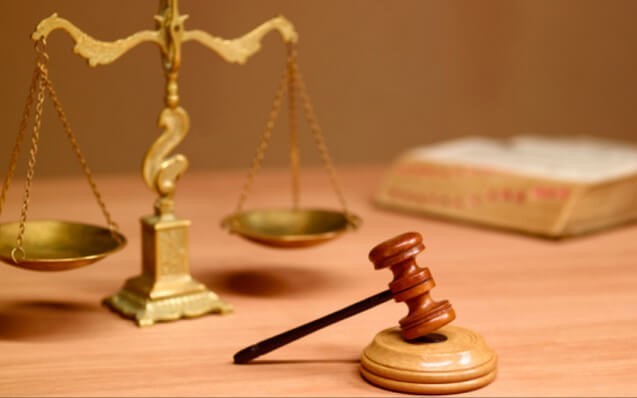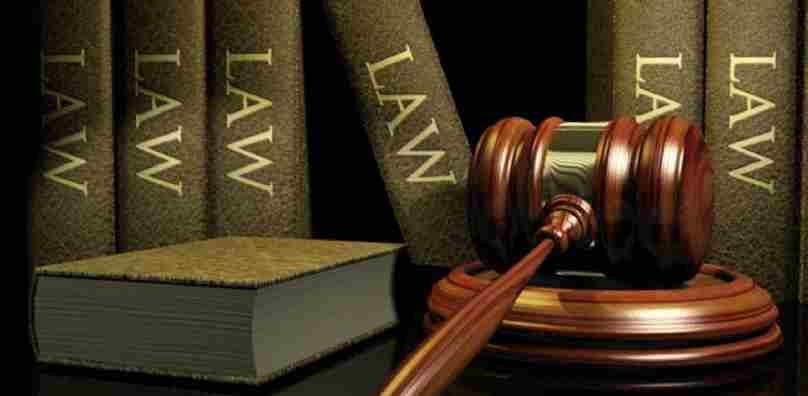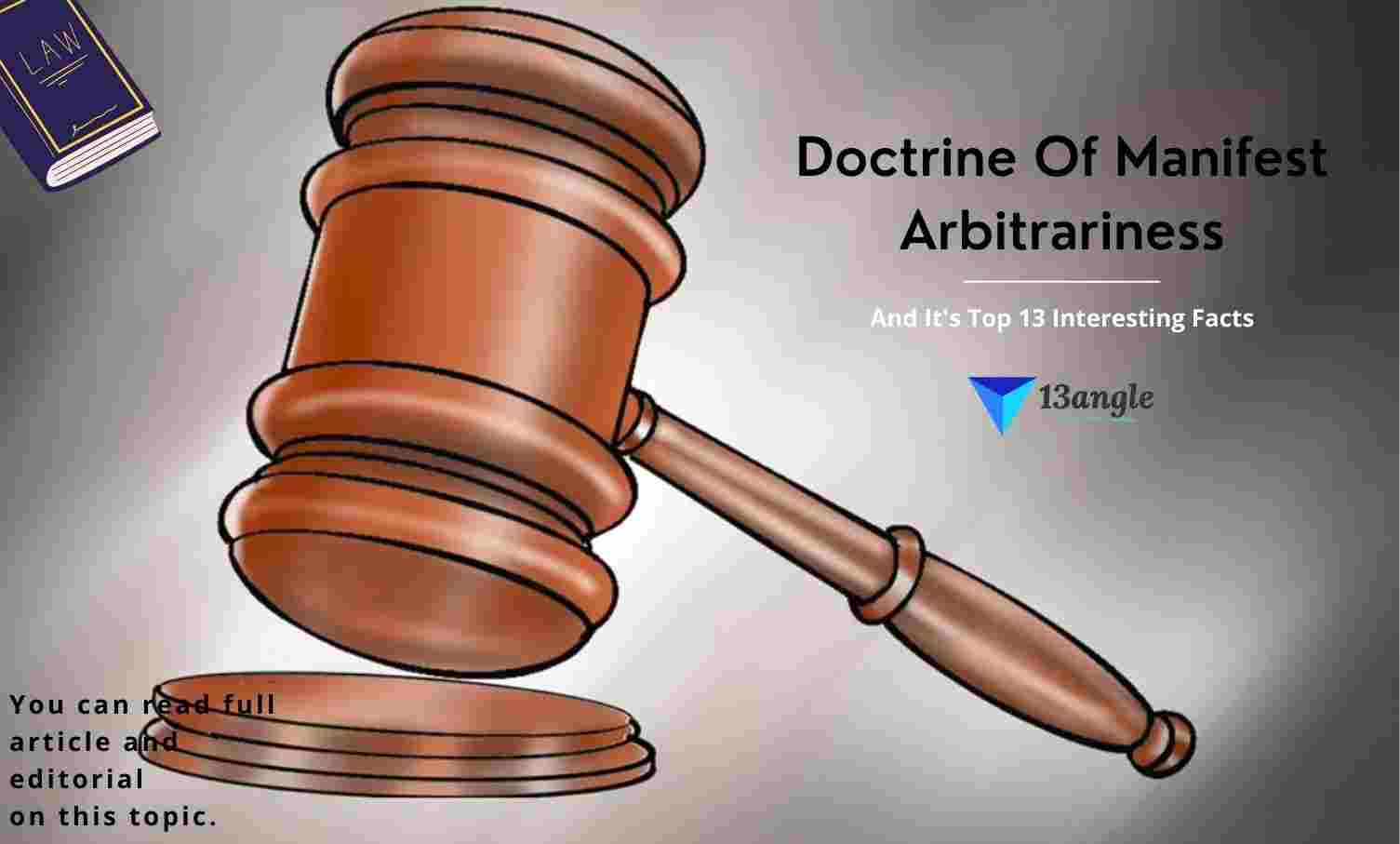- Umang Sagar
- Law, Recent article
The Doctrine Of Manifest Arbitrariness

Introduction
Any action based on bias or inclination rather than logic or facts is arbitrary. When the decision-making process and the final conclusion are both based on irrelevant information while neglecting significant considerations, this is referred to as “arbitrariness.” Arbitrariness is the trait of being arbitrary or uncontrollable in the exercise of one’s willpower. To pass the “arbitrariness” test, legislative enactments must be based on identifiable principles and the challenged conduct must be rational. When a decision-making method is followed but no justifications are documented, this is referred to as “arbitrariness.”
As things stand following the ShayaraBano decision, “manifest arbitrariness” would entail the legislature acting “arbitrary, unreasonably, and/or without proper deciding criteria.” Excessive or disproportionate is also a term used to describe anything.
Evolution Of Arbitrariness

The Supreme Court was asked in S.G. Jaisinghani v. Union of India whether promotion by seniority, which treated direct recruits and promotes differently, was discriminatory under the Income Tax seniority standards. The issue, in this case, was whether or not a categorization under subordinate law was appropriate. The rules were found to be arbitrary and unjust, and they were overturned. “The lack of arbitrary authority is the first necessary of rule of law,” it was said.
The legitimacy of Rule 9(2) of the Mysore Recruitment of Gazetted Probationers’ Rules, 1959, enacted by the Governor of Mysore in the exercise of his duties under the proviso to Article 309 of the Constitution, was challenged in State of Mysore v. S.R. Jayaram, (1968) 1 SCR 349.
Rule 9(2), which provided the government unrestricted ability to nominate any candidate it deemed fit, was found to give the government arbitrary power and was knocked down as a violation of Article 14.
Egality, from a positivistic perspective, is diametrically opposed to arbitrariness. In truth, equality and arbitrariness are mortal rivals; one belongs to the rule of law in a republic, while the other to an absolute monarch’s whims and caprices. When an act is arbitrary, it implies that it is unequal both in terms of political logic and in terms of constitutional law, and so violates Article 14.
Arbitrariness is diametrically opposed to equality. Article 14 prohibits the government from acting arbitrarily and assures justice and equality of treatment. The principle of reasonableness, which is an essential element of equality or non-arbitrariness both legally and philosophically, pervades Article 14 like a brooding omnipresence, and the procedure contemplated by Article 21 must pass the reasonableness test in order to be in compliance with Article 14. It must be “just, reasonable, and fair,” rather than arbitrary, whimsical, or oppressive; otherwise, there would be no procedure at all, and Article 21 would not be met.
Judicial Approach And Controversy With Regard To Doctrine Of “Manifest Arbitrariness”

- The notion of ‘Manifest Arbitrariness’ was first recognized in the case of E.P. Royappa v. State of Tamil Nadu16, but it remained Res Integra for four decades until being developed and concretized in the Shayara Bano case. The reason for the delay is that there have been inconsistent and per incuriam decisions in a number of instances containing constitutionally significant issues. This section will trace the history of this concept through a few key instances, which will be discussed in chronological sequence.
1. Decisions made prior to McDowell
The transfer of a public servant to a lower position was challenged as “arbitrary, hostile, and mala fide” in E.P. Royappa v. State of Tamil Nadu. This was not a case where the law’s legality was called into question.
The validity of governmental action, on the other hand, was put to the test of arbitrariness. “Equality is a dynamic notion with various facets and dimensions,” the Court remarked, “and it cannot be “cribbed cabined and restricted” within traditional and doctrinaire confines.” Egality, from a positivistic perspective, is diametrically opposed to arbitrariness. In truth, equality and arbitrariness are sworn adversaries; one belongs to the Rule of Law in a republic, while the other belongs to an absolute monarch’s whims and caprice.
When an act is arbitrary, it implies that it is unequal both in terms of political logic and constitutional law, and it thus violates Article 14, as well as Article 16 if it concerns any topic dealing with public employment. Articles 14 and 16 prohibit the government from acting arbitrarily and promote justice and equality of treatment.”
2. Director, Central Bureau of Investigation & Others v. Subramanian Swamy
The Court was dealing with a challenge to the constitutional validity of Section 6A of the Delhi Special Police Establishment Act 1946, which required the Central Bureau of Investigation to obtain Union government approval before conducting an inquiry or investigation into any alleged offense committed under the Prevention of Corruption Act 1988 if the officer in question was of the rank of Joint Secretary or higher.
“Whether arbitrariness and unreasonableness or obvious arbitrariness and unreasonableness, being features of Article 14 of the Constitution of India, are accessible or not as grounds to nullify a legislation?” the constitutional bench was asked. “Where legislation is sought to be challenged as unconstitutional and violative of Article 14 of the Constitution, the Court must remind itself of the principles related to the application of Article 14 in respect to legislative invalidation,” the court said. Article 14’s two aspects in terms of applying it to law and invalidating legislation are now clearly understood:
- Discrimination is based on an inadmissible or invalid categorization.
- Excessive delegation of powers; conferring unrestricted and unguided powers on the executive branch, whether through delegated legislation or the authority to issue administrative orders, if such conferment is made without any guidance, control, or checks, is a violation of Article 14 of the Constitution.”
Investigation Of Arbitrariness Manifestation

One could wonder why there is a need to investigate this doctrine. There are four parts to the answer: –
There are no well-stated criteria on which this doctrine can be applied to the legality of laws under judicial scrutiny, particularly plenary legislation.
The theory affords the Judicial Review Judge broad latitude and allows value judgments about Parliament’s wisdom to be made.
Opinions on the scope of “arbitrariness” have differed among constitutional courts.
The Supreme Court’s views on the extent and breadth of this theory differ, as seen by the decisions in Shayara Bano and K.S. Puttaswamy. Excessive or disproportionate is also a term used to describe anything.
K.S. Puttaswamy And The Dilution Of “Manifest Arbitrariness”
Nine Justices of this Court convened in the K.S. Puttaswamy’s case examines whether privacy is a constitutionally protected virtue. This Court was able to examine the underlying ideas on which our Constitution was built and their ramifications for a way of life it aspires to defend because of the matter at hand, which stretched out to the basis of a constitutional culture based on the protection of human rights.
Because we are not concerned with the issue of “informational privacy,” it would be appropriate, to begin with, a discussion of the judicial review standards outlined in the majority judgment.
The Respondent’s objections relating to “substantive due process” were addressed by Chandrachud, J., speaking for himself and three other Judges. The circumstances surrounding the formulation of Article 21 have been noted as indicating a deliberate omission of the phrase “due process of law” by the Framers.
In this regard, Dr. Ambedkar’s address to the Constituent Assembly is instructive. Dr. Ambedkar was opposed to the concept of allowing the judiciary to rule on the wisdom of the legislative. Despite oscillating between the two schools of thought that were prevalent at the time, he finally decided to leave the choice to the House’s will.
On December 13, 1948, several members’ attempts to reinsert “due process” were rejected, and the phrase “due process of law” was removed from the original draught Constitution.
Chandrachud then went on to look at supras, but came to a different conclusion than ShayaraBano. While the Court did not use the term “substantive due process” in Mithu, the learned Judge noted that the Court recognized that a law could be challenged under Article 21 not only because the procedure it prescribes is not fair, just, or reasonable, but also because it imposes a penalty that is “savage” or, as the Court put it, “anathema of civilized jurisprudence.”
After delving into the ratios of the aforementioned decisions, the learned Judge moved on to the Rajbala V. State of Haryana, in which a two-judge panel cautioned that, in light of the McDowell case, it would be inappropriate to incorporate notions of substantive due process when examining the constitutionality of Indian legislation.
A ‘strong’ presumption of legality exists in favor of legislation approved by the legislature, according to Chandrachud. J. It is common knowledge that the legislature has the best understanding of societal issues and is unlikely to violate Part III of the Constitution. This position would also be consistent with the idea of separation of powers, which requires the court to respect the will of the legislature, which is responsible for enacting laws, and the administration, which is responsible for enforcing those laws. This also best embodies the genuine spirit of democracy, in which the court does not second-guess the decisions of the people’s elected representatives.
Conclusion

Since its conception, the doctrine of ‘arbitrariness’ has been a source of contention. Despite the fact that Bhagwati J. interpreted the concept of ‘arbitrariness’ under Article 14 quite clearly and applied it to all types of state activity without making any attempt to distinguish between legislative and administrative functions, However, for a long time, the notion of arbitrariness was thought to apply solely in administrative affairs, and the scope of judicial examination of legislation under Article 14 on the basis of ‘equality’ was equated to the ‘classification test.’ However, there was no framework to examine the judicial validity of a law where there was no opportunity for comparison review but the law had unreasonableness or its relevance had stopped over time owing to changes in circumstances.
The matter was put to rest with the Shayara Bano decision. But the important question raised by this four-decade fight to re-establish a well-established theory is whether we can tolerate such lengthy obscurity in constitutionally significant topics. Furthermore, per incuriam decisions that deviate from established precedents without a legitimate basis, such as McDowell and Rajbala, result in inconsistency, contradictions, and a lack of precision in defining standards and parameters. Such decisions pose a serious threat to the “doctrine of precedent” and, ultimately, to judicial discipline.
Top 13 Facts About Doctrine Of Manifest Arbitrariness
The Arbitration and Conciliation (Amendment) Act, 2015 was adopted by the Indian Parliament in an attempt to mitigate the detrimental consequences of several outdated legislation regulating arbitrations in India (2015 Amendment).
Section 26 of the 2015 Amendment clarifies that the altered provisions do not apply to arbitral proceedings initiated before the 23rd of October 2015 (cut-off date), i.e., the date of the 2015 Amendment’s commencement.
Section 36 of the Arbitration Act provided for an automatic stay on enforcement of an award, where such award has been challenged by way of an application under Section 34 of the Arbitration Act.
This doctrine has been applied by the Supreme Court previously in various landmark judgments while striking down statutory provisions which were violative of Article 14 of the Constitution.
No one can be discriminated against anybody and everyone should be treated as an equal is being recognized under the Arbitration act.
Non-arbitration is necessary to attain a rule of law to ensure the State’s action which is to be fair and reasonable.
The doctrines of promissory estoppel, non-arbitrariness, natural justice, and irrationality all fall under the umbrella of arbitrariness.
Under Article 14 the test of manifest arbitrariness, therefore, must be something done by the legislature capriciously, irrationally, and/or without an adequate determining principle.
Section 377 strikes a discordant note in the regard to the freedoms of LGBT people by exposing them to societal outcasts and dereliction of duty.
The Section also interferes with consensual acts of competent adults in private space.
Section 57 of the Aadhaar Act, which may have been abused by private companies and led to commercial exploitation of people’s personal data without their agreement, as well as individual profiling, was thrown down under Article 14 on the grounds of ‘manifest arbitrariness.’
According to the ruling in the ShayaraBano case, “manifest arbitrariness” occurs when the legislature acts “capriciously, irrationally, and/or without proper deciding criteria.”
The deletion of Section 26 of the 2015 Amendment Act, together with the insertion of Section 87 into the Arbitration Act, 1996 by the 2019 Amendment Act, results in a delay in the disposal of arbitration proceedings.





